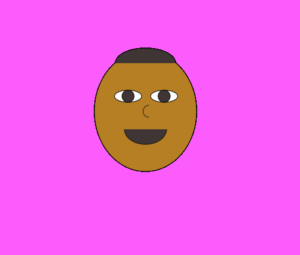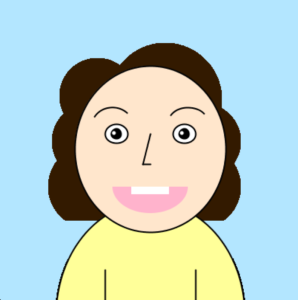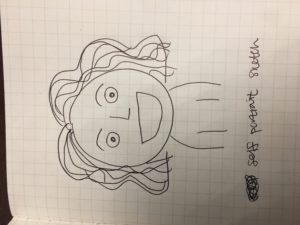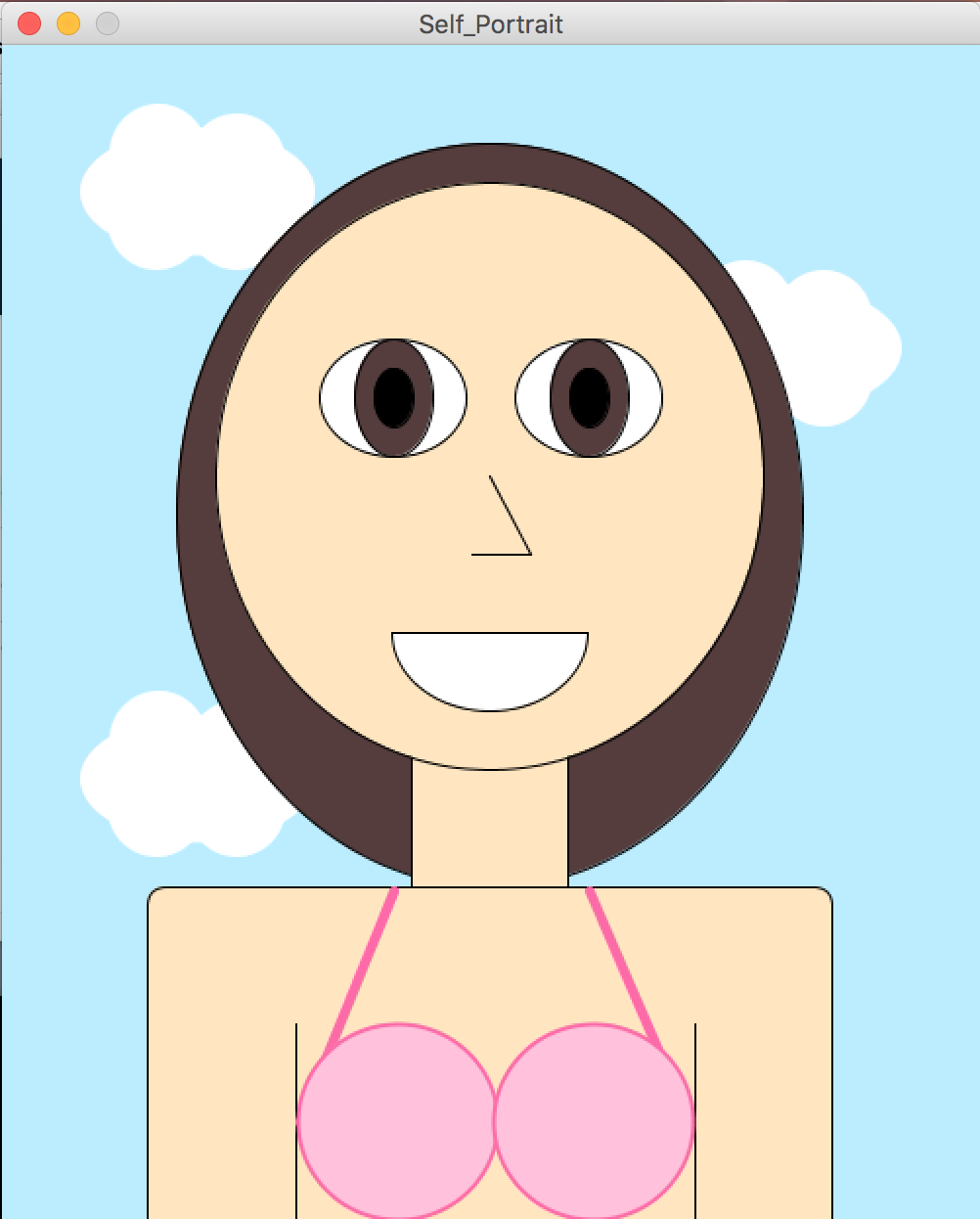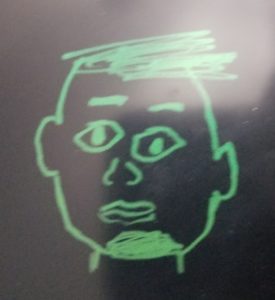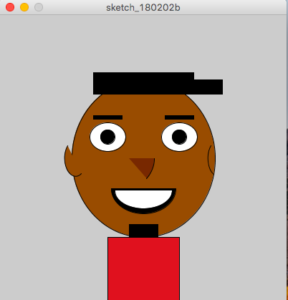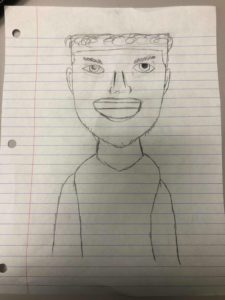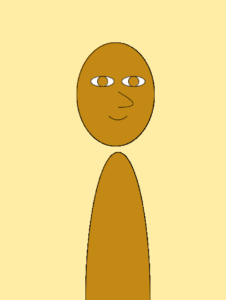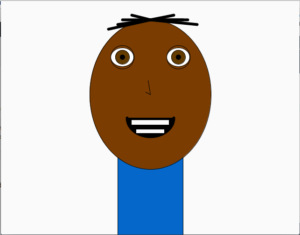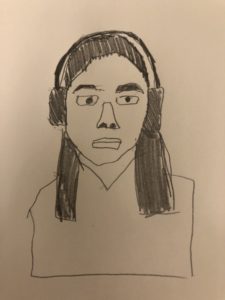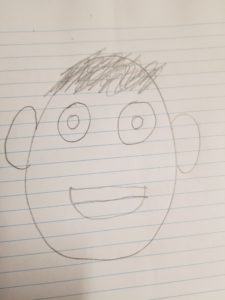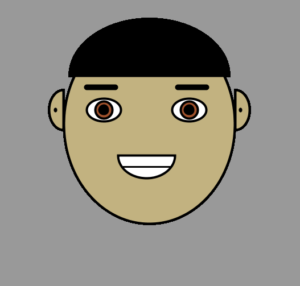
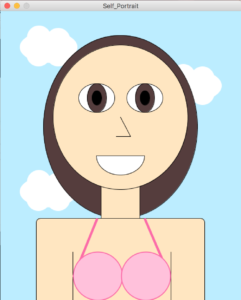
The most challenging thing about this assignment was learning to think in terms of basic shapes. When I was planning the portrait, I had to think of the body in terms of its most basic components. I tried to focus on rectangles and ellipses, as those were the easiest to code. The head is almost all made of circles, with a few lines. I thought the clouds would be very difficult, but they actually didn’t take me very long. They were the last things I did, and so I’d gotten a hang of how to use the program. I made a series of small ellipses with no strokes and combined them into clouds. The actual hardest part of the project was figuring out the arc.
The one thing I couldn’t master was bangs. I have kind of weird, swoopy bangs, and I could not figure out how to code them. I tried using an arc, but I didn’t know how to rotate it. Nor did I know how to put a stroke only on one part of the arc.
Ultimately, I’m happy with how it turned out!
You can find it here: https://www.openprocessing.org/sketch/504627
